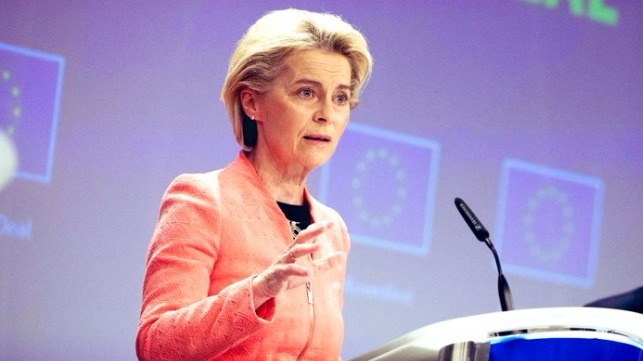European Commission Releases Long-Awaited Low Carbon Fuel Plan

On July 14, the European Commission unveiled an ambitious proposal for cutting the EU's carbon emissions by 55 percent by 2030. The details for the EC's promised European Green Deal cover every sector, with carbon pricing schemes for all modes of transportation, including all domestic and international maritime voyages calling at EU ports.
"We can choose a better, healthier, more prosperous way of living. Saving the climate is our generational task. It must unite and encourage us. It is about securing the wellbeing and freedom of our children," said EC President Ursula von der Leyen in a statement. "There is no greater, nobler task. Europe is ready to lead the way."
The sweeping proposal would have a major impact on the automotive sector, including the phaseout of new CO2-emitting vehicles by 2035, and would accelerate the decarbonization of Europe's electrical grid. Imports would be affected by a new Carbon Border Adjustment Mechanism, a tax aimed at creating a level playing field by raising the cost of high-carbon products sourced outside of the EU's regulatory reach. For maritime stakeholders, the EC wants to see renewable and low-carbon fuels make up about 6-9 percent of the bunker fuel mix by 2030 and 86-88 percent by 2050. In the EC's view, this should be achieved with a combination of electrification, advanced biofuels and other renewable and reduced-carbon fuels - including LNG as a transition fuel.
In order to get there, the commission proposes to extend the European Emissions Trading System (ETS) to cover vessels' underway emissions, including 50 percent of each international voyage; invest in R&D; encourage shore power utilization; and allow EU member states to spend more on their domestic maritime decarbonization programs. The EC proposed three different mechanisms for regulating GHG emissions from shipping: a blending mandate requiring a minimum share of certain green fuels in the fuel mix; a goal-based carbon intensity target for vessels, independent of fuel choice; and a goal-based intensity target coupled with a reward system for overachievers.
In all scenarios, its forecast predicts that the policy change would leave biofuels as the dominant energy source, followed by bio-LNG; together, these two biologically-derived fuel types would cover half of the industry demand. "Biofuels and bio-LNG consumption, together, is projected to increase almost by a factor of 10 between 2030 and 2050, from around 3 million tonnes of oil equivalent (Mtoe) in 2030 up to 32 Mtoe in 2050," the EC predicted.
However, given the allowance for LNG as a transition fuel, the dominant option by 2035 could actually be fossil-derived natural gas, according to an analysis by the NGO Transport & Environment.
“The World Bank, IEA, shipyards and shipowners now recognize the pivotal role of green hydrogen in decarbonzsing shipping. The Commission remains the only major institution still recklessly pushing the industry to invest in LNG ships that will lock us into decades of further pollution and stranded assets," said T&E maritime analyst Faig Abbasov in a statement. "Governments and MEPs need to shift the focus onto promoting renewable hydrogen and ammonia instead."
T&E and other NGOs have also taken the European Commission to task for putting biofuels high on the list of alternatives, noting the potential impact on land use and the possibility of fraudulently-labeled, nonsustainable feedstocks making their way into the supply chain.
